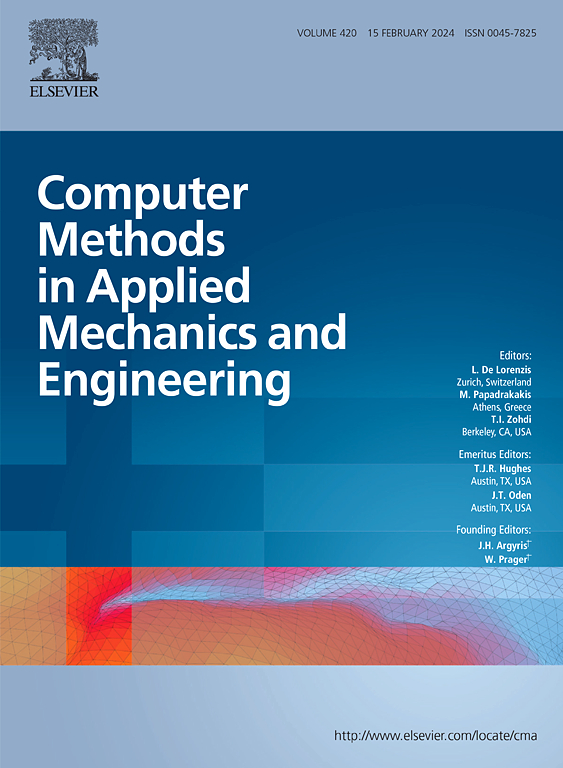Variational Physics-informed Neural Operator (VINO) for solving partial differential equations
IF 6.9
1区 工程技术
Q1 ENGINEERING, MULTIDISCIPLINARY
Computer Methods in Applied Mechanics and Engineering
Pub Date : 2025-02-03
DOI:10.1016/j.cma.2025.117785
引用次数: 0
Abstract
Solving partial differential equations (PDEs) is a required step in the simulation of natural and engineering systems. The associated computational costs significantly increase when exploring various scenarios, such as changes in initial or boundary conditions or different input configurations. This study proposes the Variational Physics-Informed Neural Operator (VINO), a deep learning method designed for solving PDEs by minimizing the energy formulation of PDEs. This framework can be trained without any labeled data, resulting in improved performance and accuracy compared to existing deep learning methods and conventional PDE solvers. By discretizing the domain into elements, the variational format allows VINO to overcome the key challenge in physics-informed neural operators, namely the efficient evaluation of the governing equations for computing the loss. Comparative results demonstrate VINO’s superior performance, especially as the mesh resolution increases. As a result, this study suggests a better way to incorporate physical laws into neural operators, opening a new approach for modeling and simulating nonlinear and complex processes in science and engineering.
求助全文
约1分钟内获得全文
求助全文
来源期刊
CiteScore
12.70
自引率
15.30%
发文量
719
审稿时长
44 days
期刊介绍:
Computer Methods in Applied Mechanics and Engineering stands as a cornerstone in the realm of computational science and engineering. With a history spanning over five decades, the journal has been a key platform for disseminating papers on advanced mathematical modeling and numerical solutions. Interdisciplinary in nature, these contributions encompass mechanics, mathematics, computer science, and various scientific disciplines. The journal welcomes a broad range of computational methods addressing the simulation, analysis, and design of complex physical problems, making it a vital resource for researchers in the field.

 求助内容:
求助内容: 应助结果提醒方式:
应助结果提醒方式:


